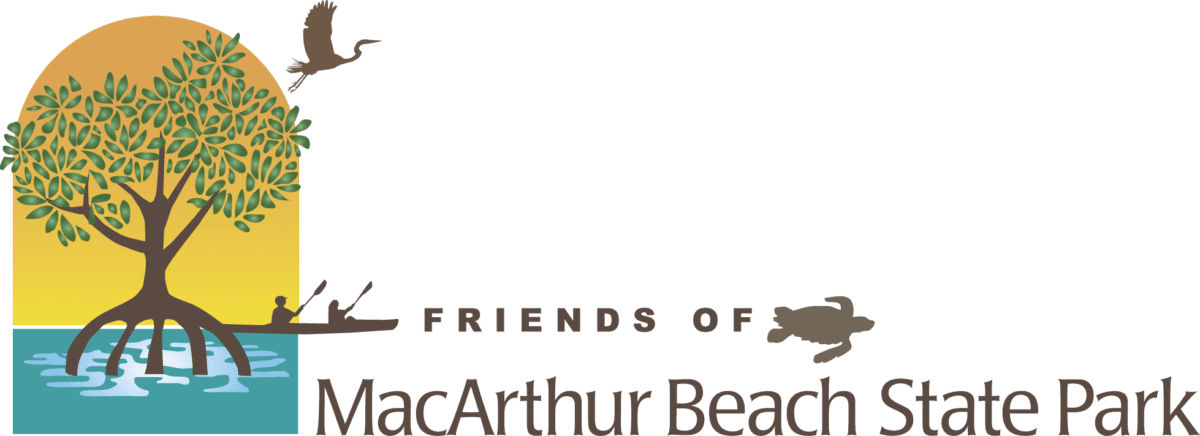Citizen Science
It is a chance to learn about Park resources and experience science in action. Public participation assists scientists by collecting meaningful, useful data which is shared with appropriate organizations and agencies.
Citizen Science Marine Debris Program
Programa de Desechos Marinos de Ciencia Ciudadana
Come participate in our Citizen Science Marine Debris Citizen Program at John D. MacArthur Beach State Park!
¡Venga a participar en nuestro Programa de Ciencia Ciudadana de Desechos Marinos en el Parque Estatal de John D. MacArthur Beach!
This project was designed to increase awareness of the marine debris and provide an outlet for YOU to take action! All families, visitors, and self-exploration groups are welcome to participate. It is available every day from 9:00 a.m. – 5:00 p.m. in our Nature Center and dedicated weigh station.
Este proyecto se diseñó para concientizar sobre los desechos marinos ¡y proporcionarle a USTED un medio para intervenir y ayudar! Todas las familias, visitantes y grupos de exploración independiente están invitados a participar. Está disponible todos los días de 9:00 a.m. a 5:00 p.m. en nuestro Centro Interpretativo y la estación de pesaje dedicada.
Contact Art Carton for a group volunteer form and fee waiver letter for your group to participate in this Program.
Comuníquese con Art Carton para obtener un formulario para grupos de voluntarios y una carta de exención de honorarios para que su grupo participe en este Programa.
Interested in learning more? Click here to download a Presentation about Marine Debris. This will help your group learn more about the Marine Debris problem before before coming to the Park and helping clean up our Beach!
¿Le gustaría aprender más? Haga clic aquí para descargar una Presentación sobre Desechos Marinos. ¡Esto le ayudará a su grupo a aprender más sobre el problema de los Desechos Marinos antes de visitar el Parque y ayudar a limpiar nuestra playa!
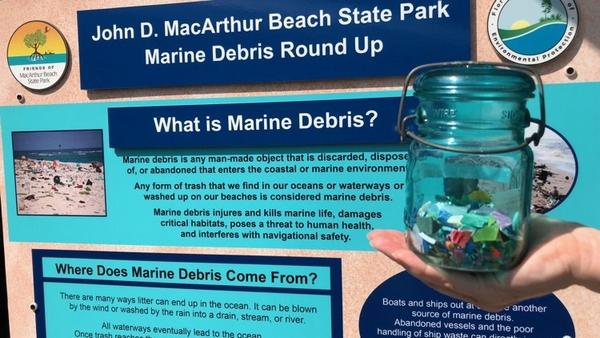
Great Annual Fish Count
The Great Annual Fish Count (GAFC) is a Volunteer Fish Survey Project that was developed in 1990 with the support from The Nature Conservancy and the National Marine Fisheries Service. The GAFC project allows volunteer divers and snorkelers to collect and report data on marine fish populations. Surveys are conducted by a rover diving technique and consists of participants identifying species and estimated abundance. This project was originally called the Great American Fish Count but was changed to the Great Annual Fish Count when it became an international project.
The surveys were originally conducted in July, but divers and snorkelers can do the surveys year-round, in any habitat, and at any time of the day or night. The Reef Environmental Education Foundation (REEF) maintains the database, which is accessible to the public. Amassing such a long-term database enables scientists to study trends in abundance and species distribution. Numerous scientific papers have been published, and data from these surveys has enabled government agencies including the National Oceanographic and Atmospheric Institute and The Nature Conservancy to make informed decisions on species protection including, but not limited to, listings on the Endangered Species Act.
Each summer, staff and volunteers at John D. MacArthur Beach State Park participate in the GAFC project (https://www.reef.org/programs/volunteer-fish-survey-project). In addition to the larger scale information utilized in the REEF database, data collected from the park surveys is used to generate a species list along with sighting frequency and abundance estimates for each species. This allows park staff to track species using the near-shore reef and to monitor changes in species composition over time. Since the inception of surveys at the park there have been 112 individual surveys recorded, documenting 208 different species!
You can see all of the data that our Citizen Scientists have collected throughout the years at https://www.reef.org/
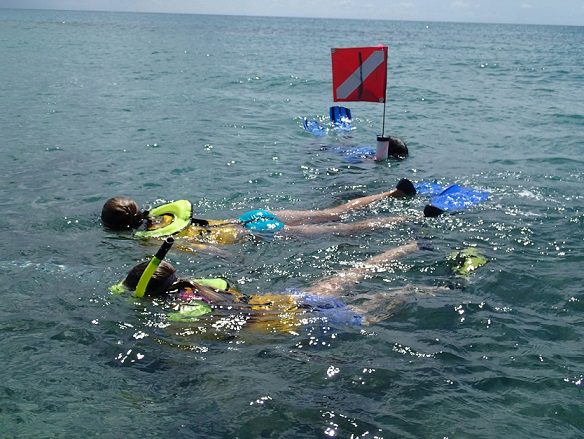
Check out our Article Published in Florida Scientist focused our six year Summer Camp Citizen Science Fish Count study.
North American Butterfly Association Butterfly Count
The North American Butterfly Association (NABA) has run the Butterfly Count Program in the United States, Canada, and Mexico. Each of the approximately 450 counts consists of a compilation of all butterflies observed at sites within a 15-mile diameter count circle in a one-day period. The annually published reports provide a tremendous amount of information about the geographical distribution and relative population sizes of the species counted. Comparisons of the results across years can be used to monitor changes in butterfly populations and study the effects of weather and habitat change on North American butterflies.
Palm Beach’s NABA-Atala Chapter has been coordinating butterfly counts at John D. MacArthur Beach State Park as part of NABA’s 4th of July butterfly counts in Palm Beach and Martin County since 1995. Park volunteers and Atala Chapter members conduct the count.
Want to see MacBeach’s data? Click Here!

Oyster Restoration Project
Oysters provide numerous ecological benefits, including improvement of water quality, habitat and food for wildlife, and erosion control. These substrate-limited natural beds will benefit from the addition of hard substrate for oysters to colonize. This Oyster Restoration Project is a collaborative effort to augment and restore native oyster populations within the estuary at John D. MacArthur Beach State Park. Florida Department of Environmental Protection (DEP), in partnership with Florida Fish and Wildlife Conservation Commission (FWC), has placed 120 tons of native limestone into Lake Worth Cove to enhance the existing natural oyster reef beds by adding hard substrate.
The limestone was hoisted over the mangroves and placed into the project footprint by crane. Once the limestone had been placed into piles, the stone was moved by hand into its final resting place during a series of volunteer workdays. Thanks to the hard work of FDEP and FWC staff, AmeriCorps members, and volunteers from the Palm Beach Fishing Club, and MacBeach, the project has been a great success. The limestone has already recruited a significant number of oysters and promises to benefit water quality and wildlife usage within the greater Lake Worth Lagoon.
Currently, Palm Beach Atlantic students and staff are monitoring the growth rate. In the future, volunteers will help in these efforts and report data. Working with the DEP, Citizen Scientist volunteers will see the benefits of this oyster population and the hopefully see the benefits in the water quality in the estuary.

Project Timeline:
- First discussions of project began 08/2018
- Applied for FWC’s MEHRMA (Marine and Estuarine Habitat Restoration Monitoring and Assessment) funding 11/2018
- Funding approved for FY 19/20, 01/2019.
- SFWMD and ACOE permits approved by 10/2019
- 02/2020 quote received; FDEP agreed to contribute difference
- 04/2020: Limestone placed into estuary in piles using crane
- 07/2020: By July the limestone had already shown significant oyster recruitment.
- 08/2020-09/2020: Series of volunteer workdays to move limestone by hand into its final footprint
- 2022 Update: Documenting the number and sizes of live oysters, numbers of dead oysters, numbers of tree oysters, mussels, sponges, and viable mangrove propagules in the reef, or anything unusual. Data analyses are preliminary but anecdotally observations of the rocks are showing recruitment of new oysters.

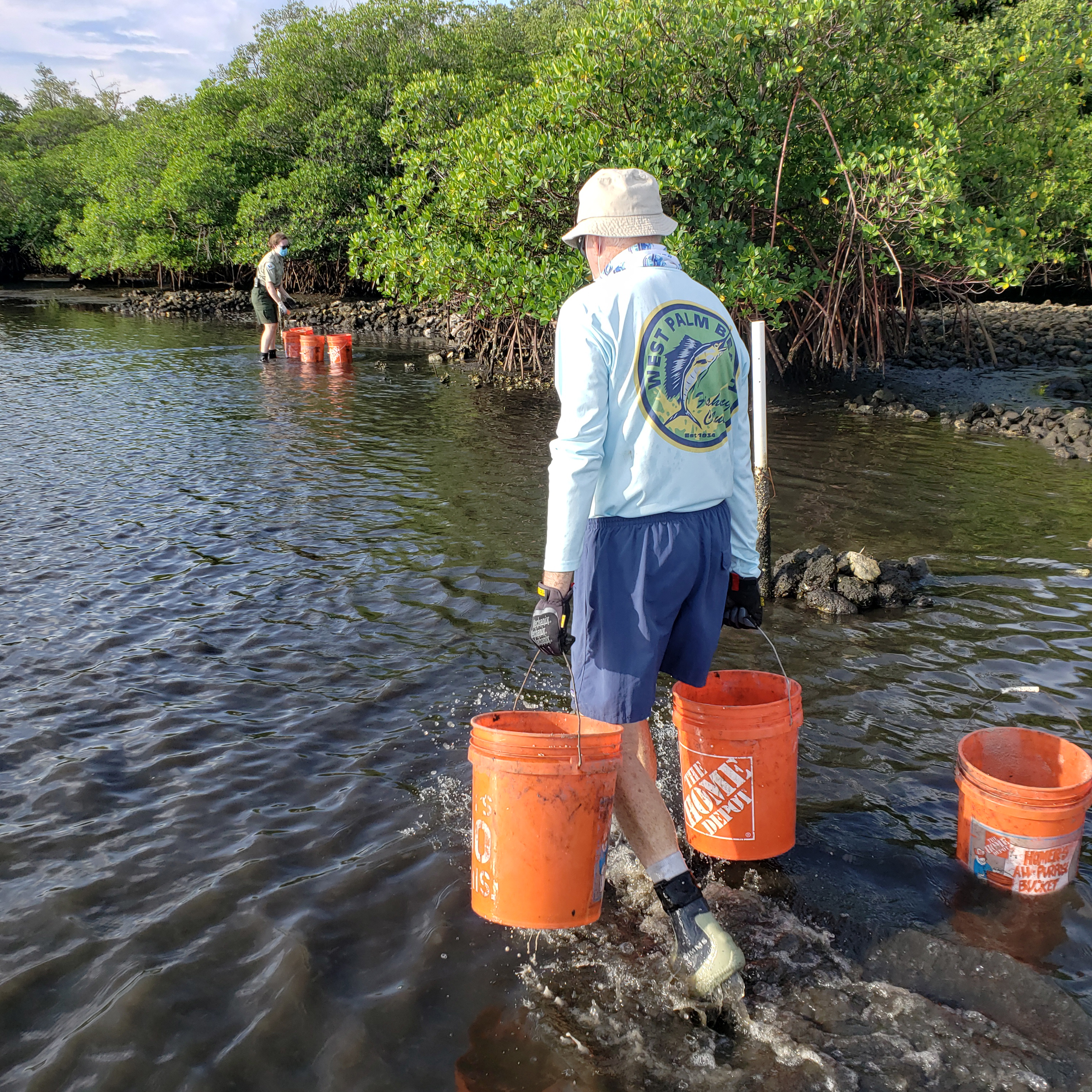
Seagrass Surveys
Seagrasses are essential to the marine environment in that they provide habitat structure and shelter, sediment stabilization, nutrient cycling, and many other functions vital to a healthy ecosystem. They are an important food source for endangered species such as green sea turtles and manatees and provide critical habitat for many commercially important species such as drums, sea bass, and snappers.
Due to the ecological importance of seagrass habitats to ecosystem function, seagrasses can be considered a “canary in the coalmine” when it comes to identification of local influences which may be stressing the environment. In order to keep our finger on the pulse of how the estuary is functioning, park staff, in partnership with Palm Beach Atlantic University, has been conducting biannual seagrass surveys within Lake Worth Cove since 2010. These surveys help to inform park managers of temporal and spatial trends in seagrass coverage, and are vital to dictation of potential future restoration efforts.
As shown in the data, the seagrass within the estuary experienced a steady decrease from an estimated 39% coverage in 2011 down to an estimated 5.6% coverage in 2016. Seagrass declines within the lagoon may be resulting from multiple stressors, including nutrient runoff, physical disturbance, large-scale environmental disturbances such as hurricanes, and climate change. There has been a slight upward trend beginning in 2017, which we will continue to monitor. Hopefully, recent restoration efforts to improve water quality within the greater Lake Worth Lagoon, including a recently completed oyster enhancement project within the estuary, will help the seagrasses continue to trend upward.
Check out this publication on the seagrass surveys at MacBeach.
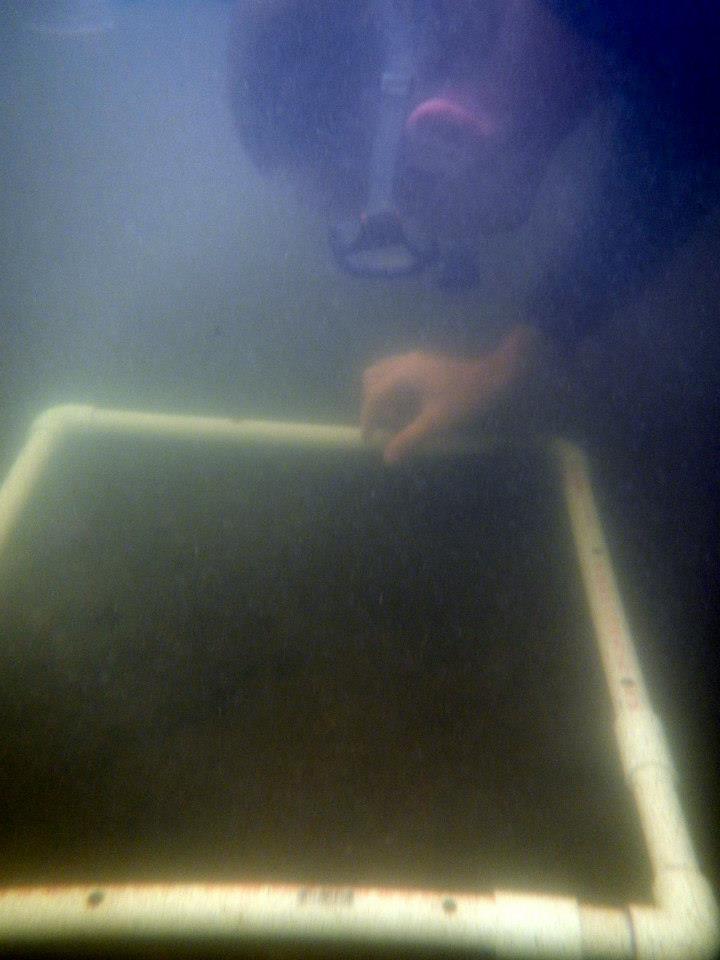
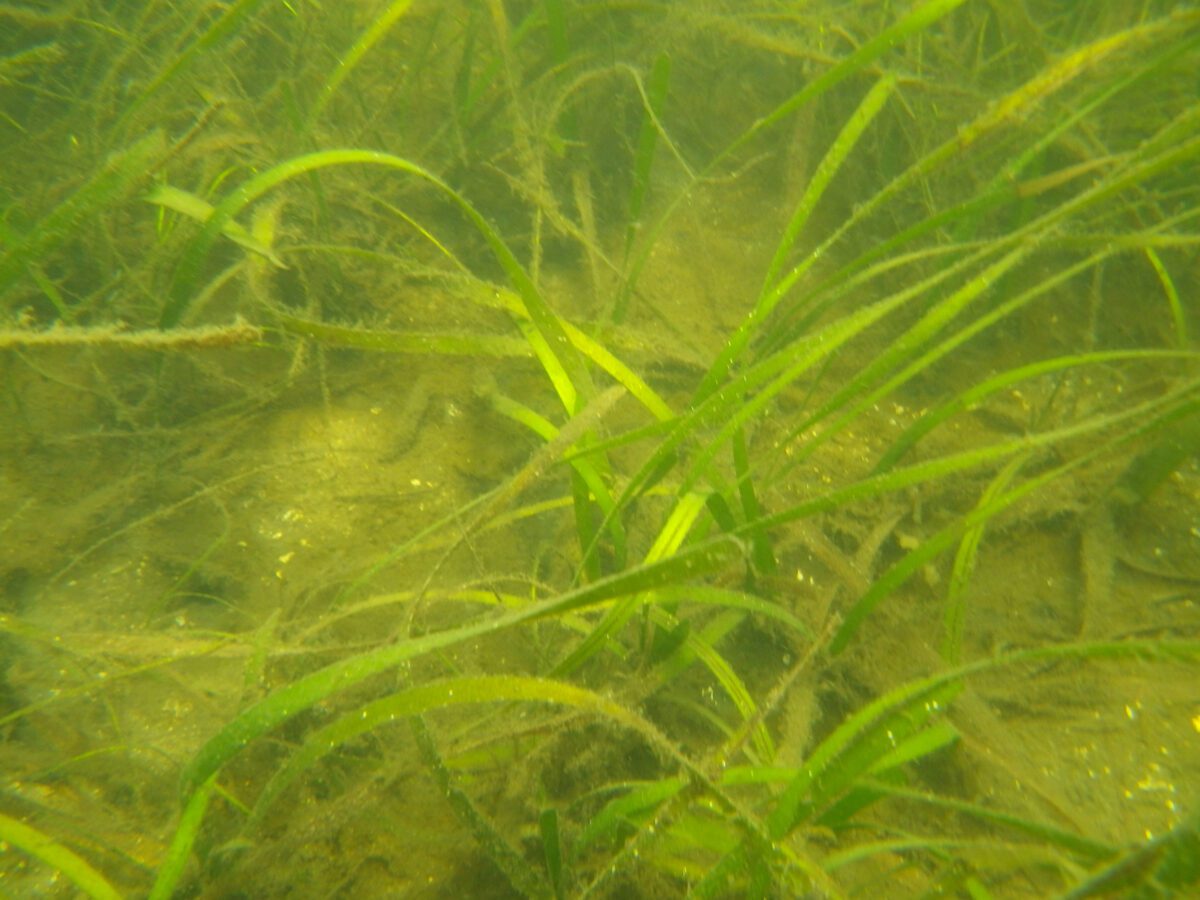
Citizen Science Sea Turtle Nest Excavations Project
The Statewide Nesting Beach Survey (SNBS) program was initiated in 1979 under a cooperative agreement between the Florida Fish and Wildlife Conservation Commission (FWC) and the U.S. Fish and Wildlife Service. The purpose is to document the total distribution, seasonality and abundance of sea turtle nesting in Florida. Three species of threatened or endangered sea turtles, the loggerhead (Caretta caretta), the green (Chelonia mydas), and the leatherback (Dermochelys coriacea), nest regularly on our beach.
MacArthur Beach State Park participates in the SNBS program, and seeks to increase the Park’s capacity to collect data by using trained volunteers to assist scientists by collecting meaningful, useful data.
Trained volunteers and rangers excavate sea turtle nests to determine nest productivity. Excavation includes digging up the nest after the turtle eggs have hatched and conducting an inventory of hatched/unhatched eggs as well as evidence of hatchling mortality.
Project X – June, July, August 2022
Loggerhead Sea Turtle Nest Excavations
Goal: 77 Nests Excavated; 90 nests were marked
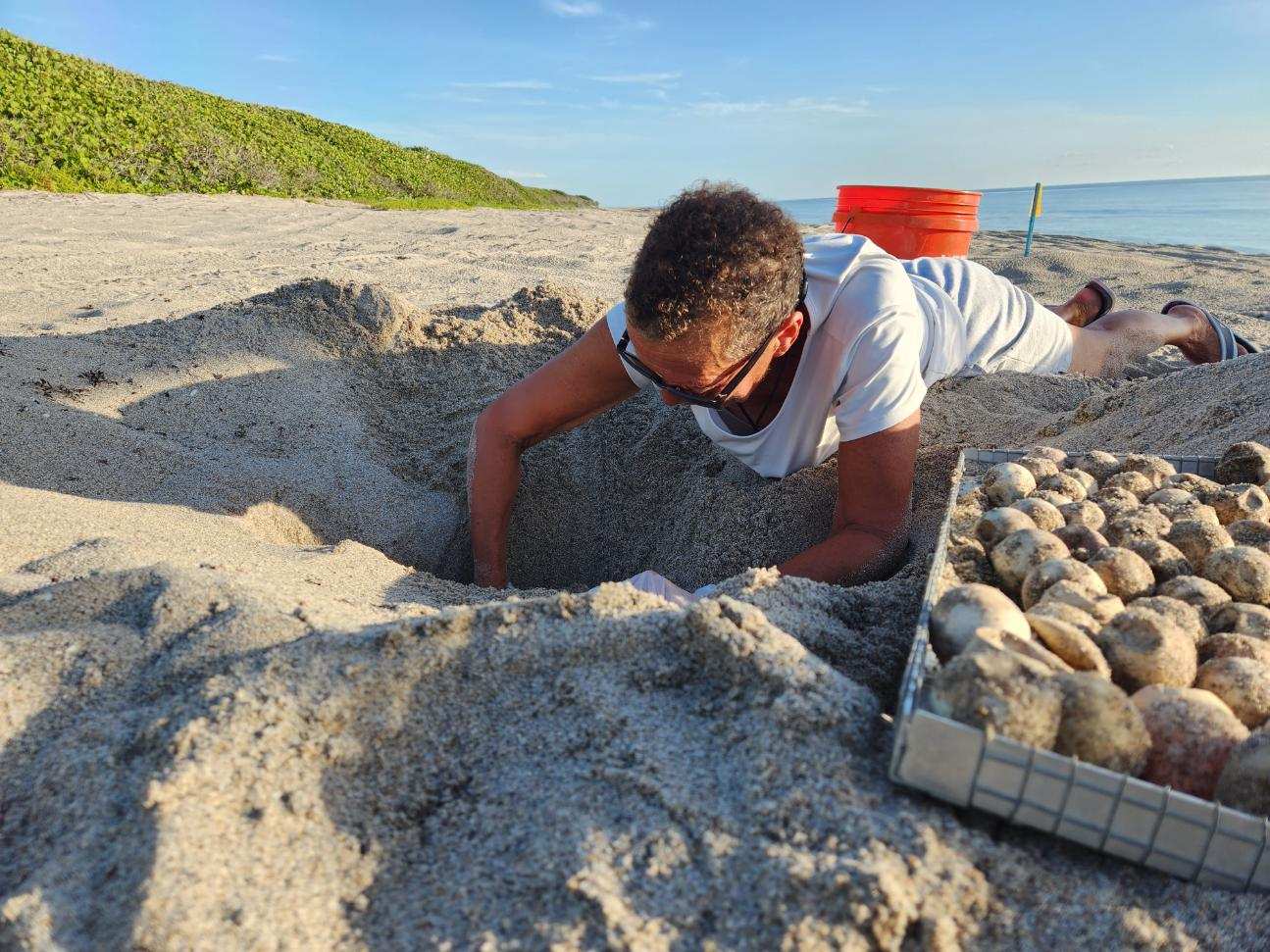
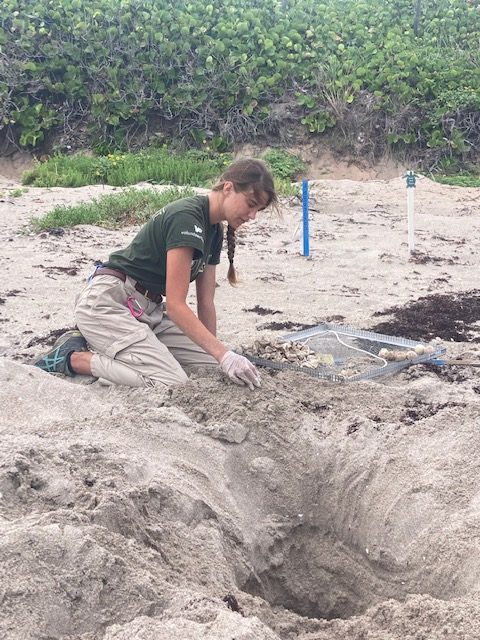
Project IX – June, July, August 2021
Loggerhead Sea Turtle Nest Excavations
Goal: 50 Nests Excavated; 66 nests
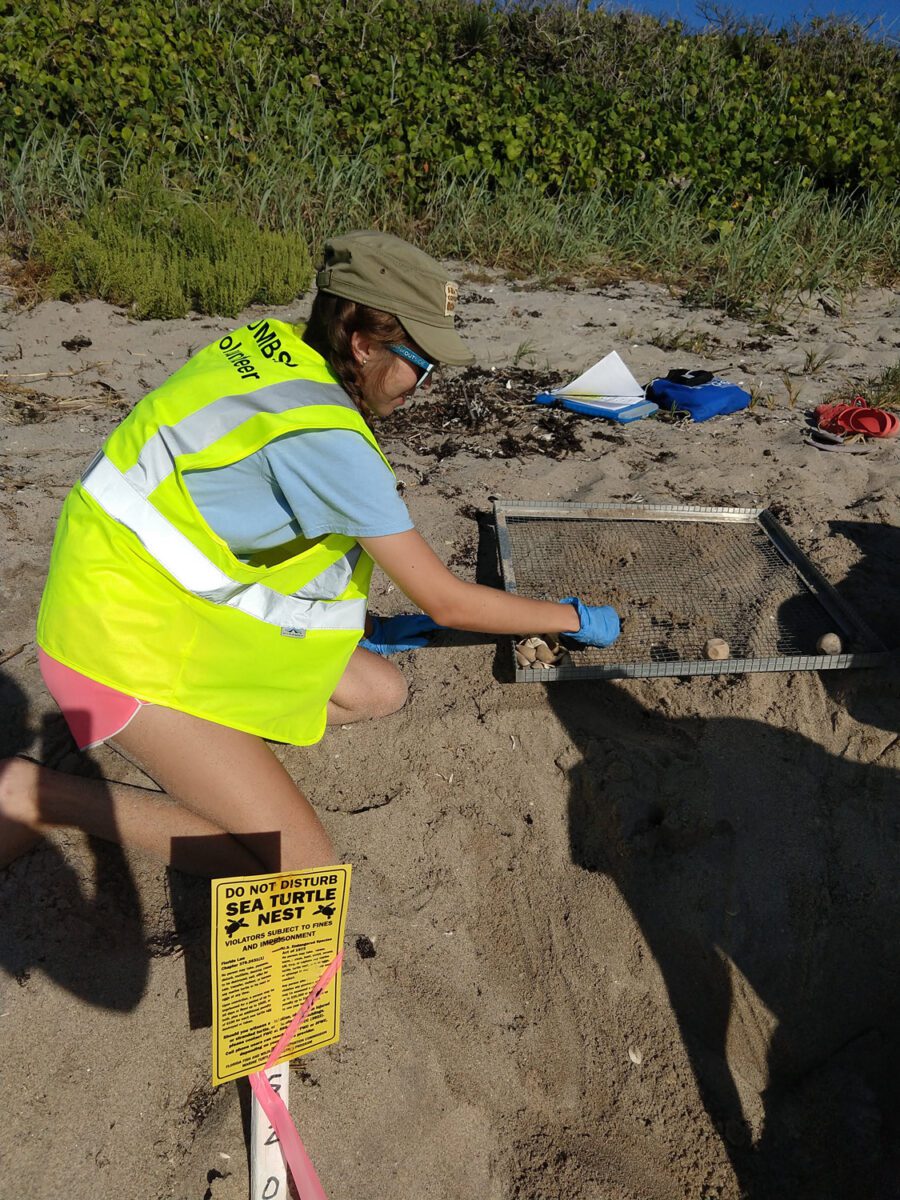
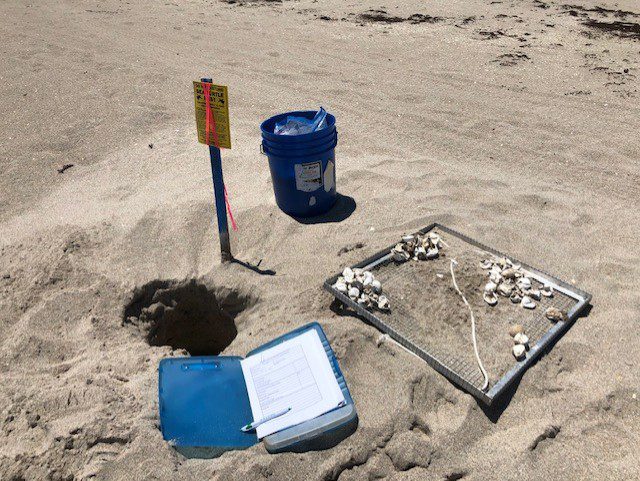
Project VIII – June, July, August 2020
Loggerhead Sea Turtle Nest Excavations
Goal: 50 Nests Excavated; 79 nests were marked and 60 were excavated
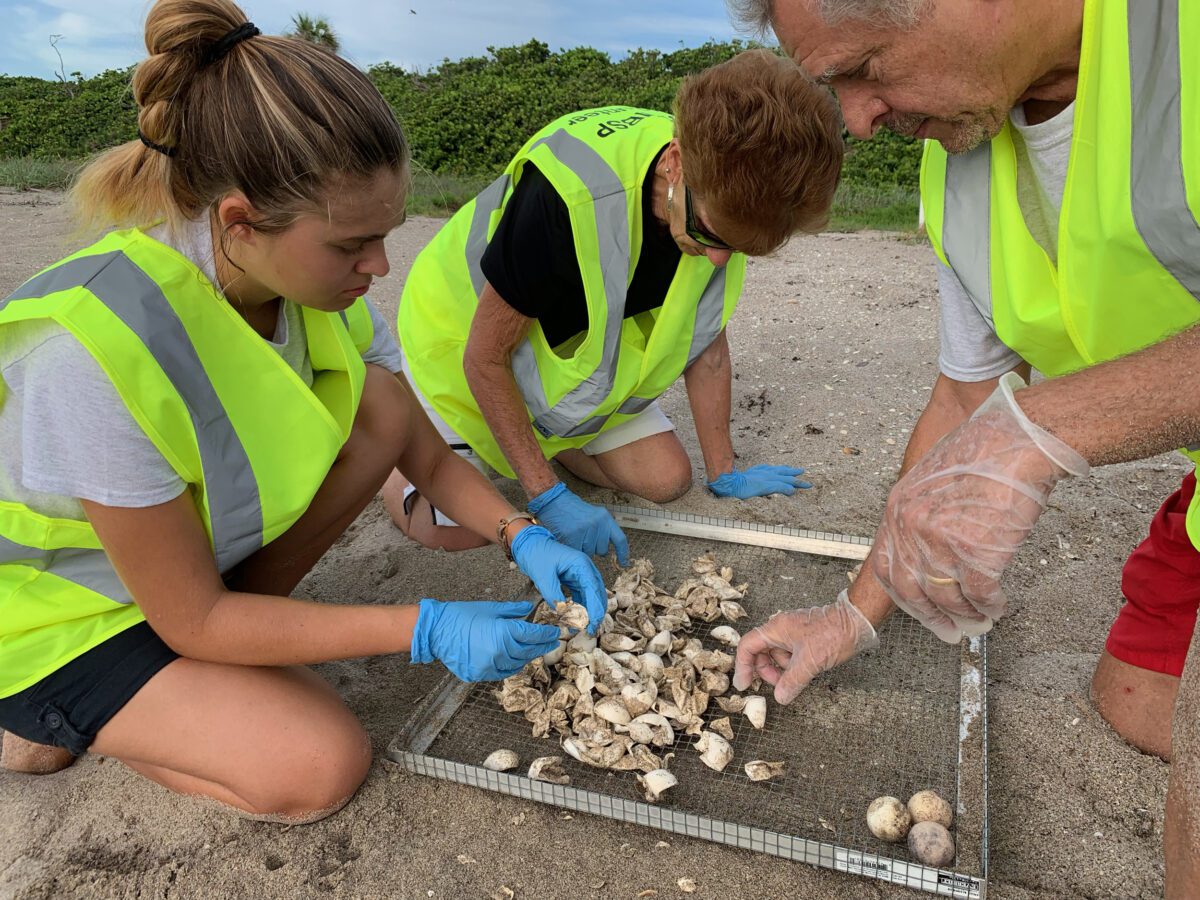
Project VII – June, July, August 2019
Loggerhead Sea Turtle Nest Excavations
80 nests marked, 45 nests excavated – many nests were washed over during Hurricane Dorian
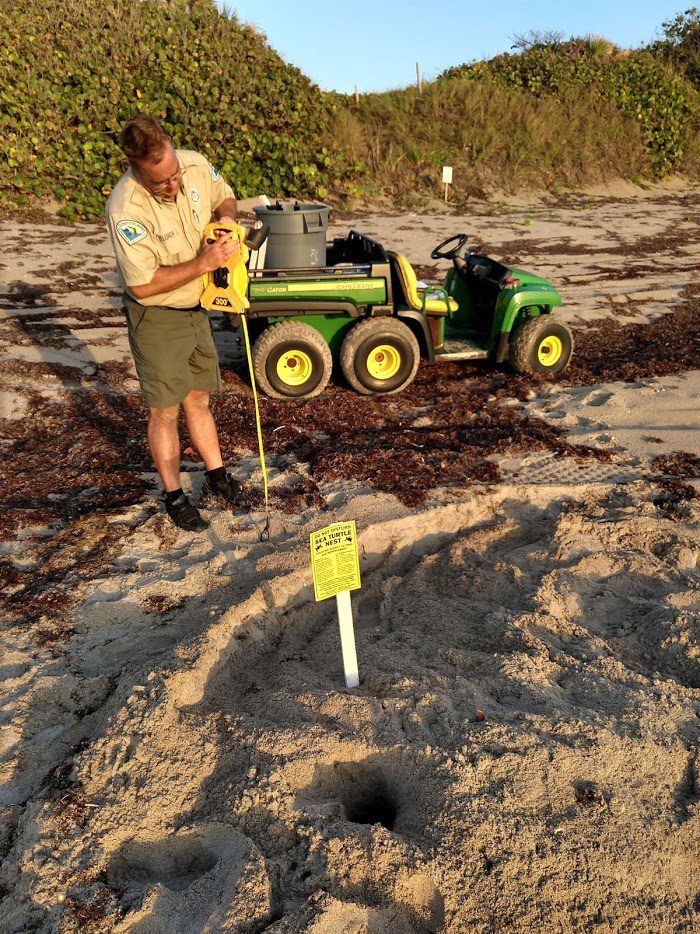
Project VI – June, July, August 2018
Loggerhead Sea Turtle Nest Excavations
76 nests marked, 67 nests excavated
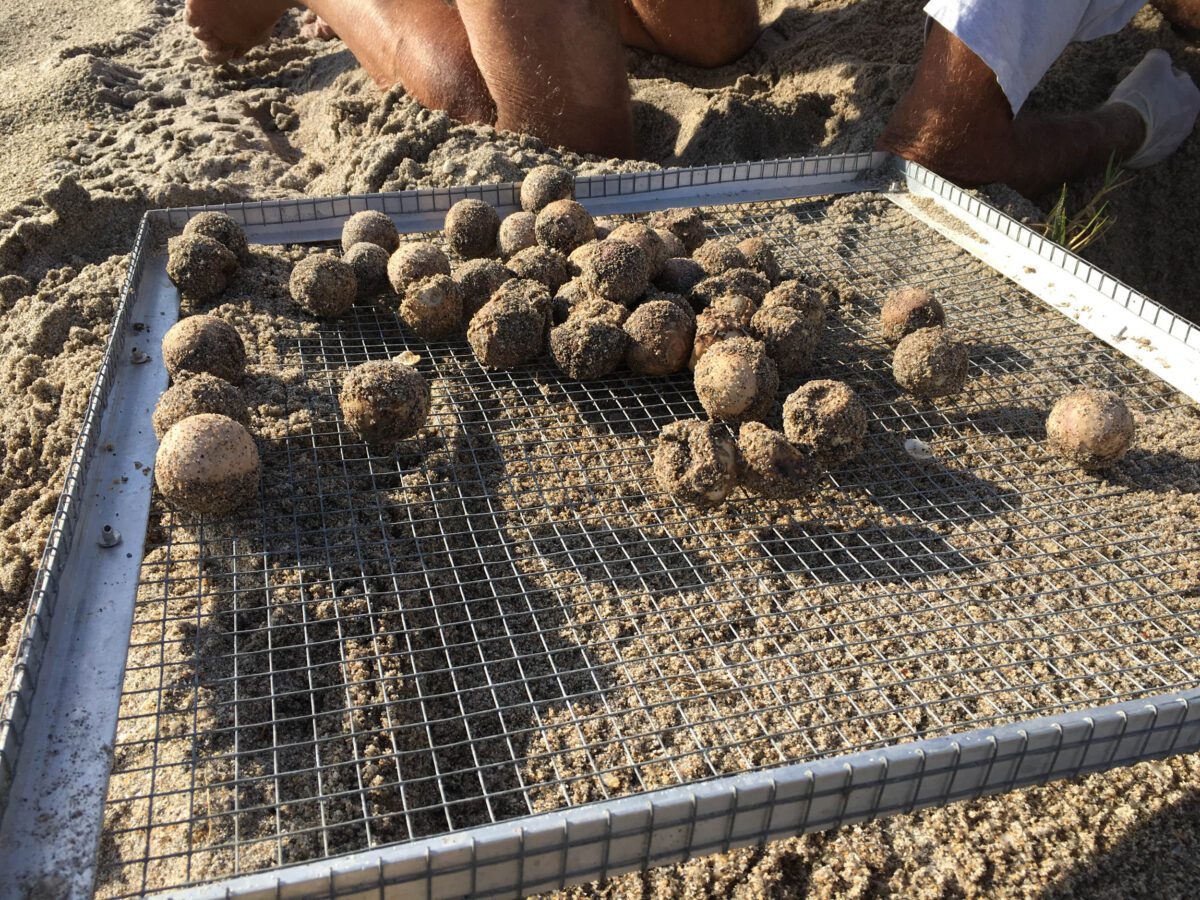
Project V – June, July, August 2017
Loggerhead Sea Turtle Nest Excavations
70 nests marked, 54 nests excavated

Project IV- June, July, August 2016
Loggerhead Sea Turtle Nest Excavations
Goal: 50 Nests; 91 Nest Marked, 81 Nests excavated
Our Team: We brought together Park staff, Regular Service Volunteers, and members of the community to research and collect meaningful data on sea turtle nests – 39 Volunteers in all. Our beach is one of the highest density nesting beaches in Florida; in 2016 we had a total of 2125 nests laid on our 1.6 miles of beach. As a part of the Florida Fish & Wildlife Conservation Commission (FWC) Index Nesting Beach Program, nest excavation provides very important information on the health and productivity of sea turtles.
91 nests were marked; 7 were washed-out by Hurricane Matthew, 3 were not found
81 nests were excavated
Excavated nests had an average of 98 eggs (high of 149, low of 54)
2348 hatchlings emerged and left their nest
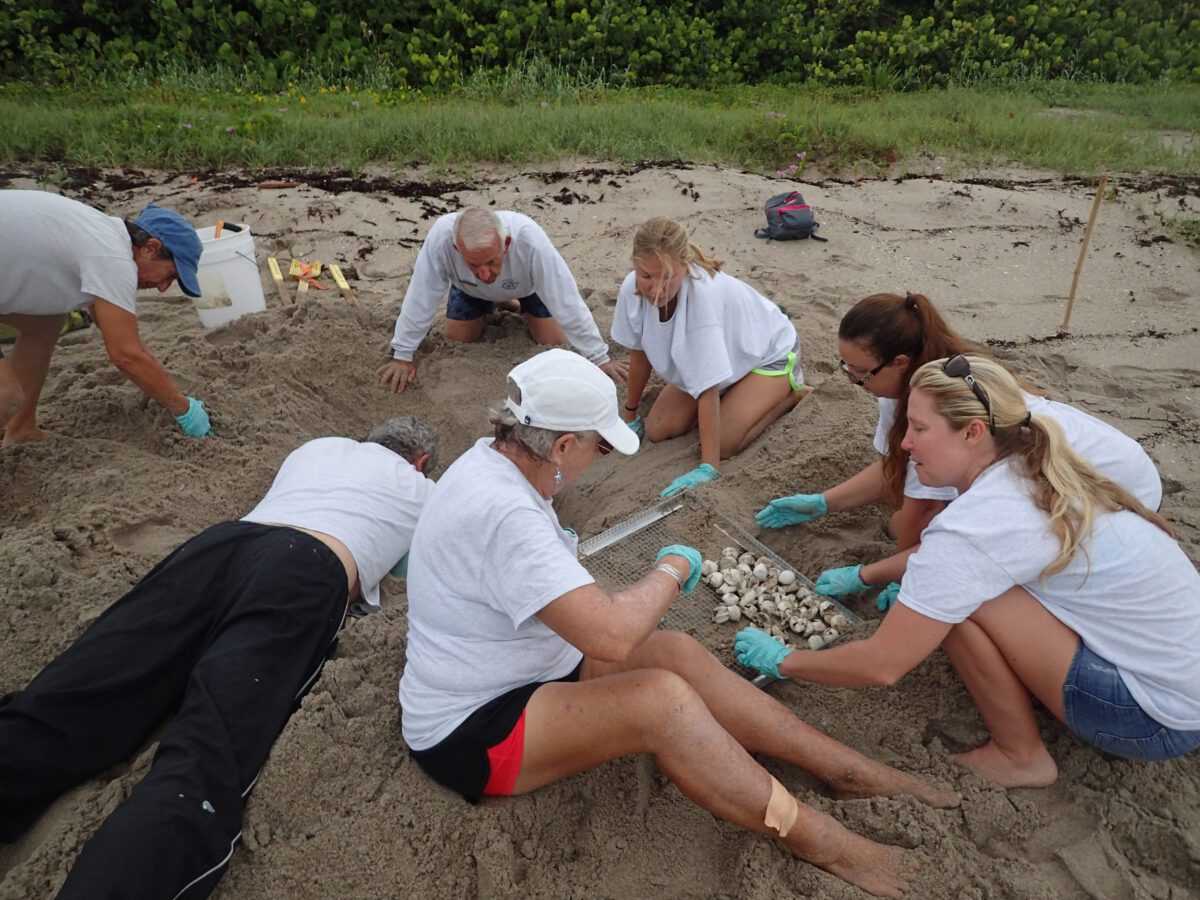
Project III – June, July, August 2015
Loggerhead Sea Turtle Nest Excavations
Goal: 50 Nests; 64 were excavated!
Our Team: In 2015 we had a total of 2791 nests laid on our 1.6 miles of beach. As a part of the Florida Fish & Wildlife Conservation Commission (FWC) Index Nesting Beach Program, nest excavation provides very important information on the health and productivity of sea turtles.
Early estimations of our project are exciting – 171,695 loggerhead eggs laid on our beach this season! If you take that a step further and apply our best guess of how many hatchlings make it to adulthood, we produced about 100 adult loggerhead sea turtles this season.
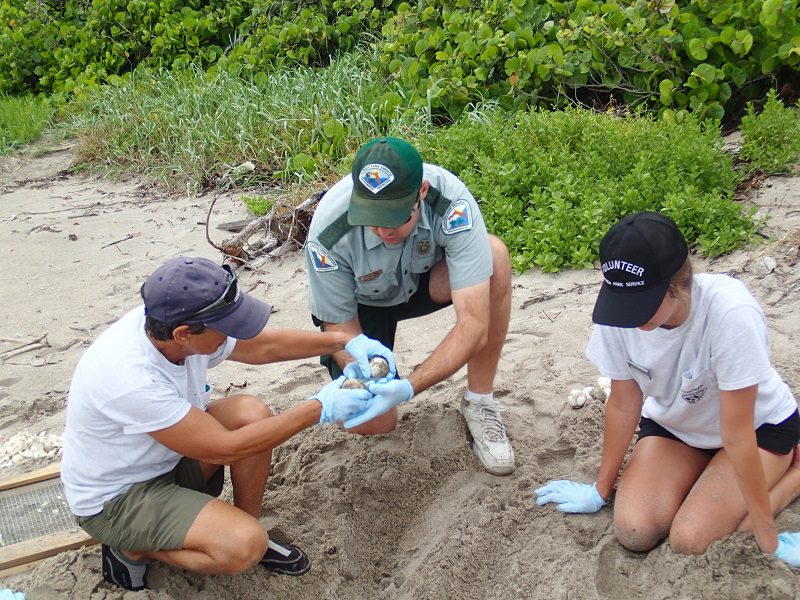
Project II – June, July, August 2014
Loggerhead Sea Turtle Nest Excavations
OUR TEAM: In 2013 we had a total of 2582 nests laid on our 1.6 miles of beach. As a part of the Florida Fish & Wildlife Conservation Commission (FWC) Index Nesting Beach Program, nest excavation provides very important information on the health and productivity of sea turtles.
Park staff marked 73 nests and our hard-working volunteers excavated 56 of those nests 3 to 5 days after the turtles have hatched out. This is work done in the early morning hours on our beach, as they locate the specific nest to be excavated, find the clutch, dig up nest contents by hand, inventory nest contents into specific categories, record data and then re-bury all contents.
Early estimations of our project are exciting – 164,197 loggerhead eggs laid on our beach, producing an estimated 127,897 loggerhead hatchlings this season! If you take that a step further and apply our best guess of how many hatchlings make it to adulthood, we produced about 100 adult loggerhead sea turtles this season.
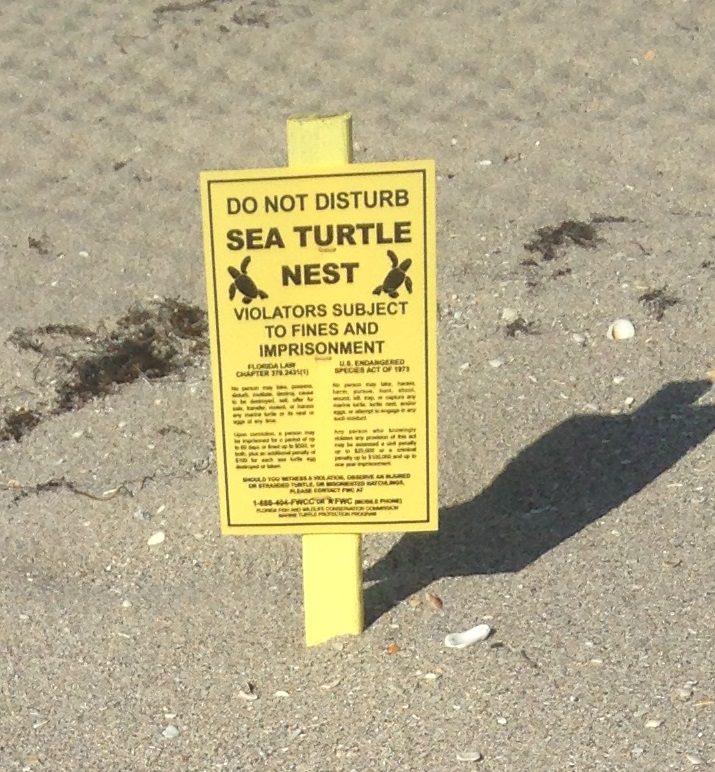
Project I – June, July, August 2013
Leatherback Sea Turtle Nest Excavations
Our first Citizen Science project was a huge success, mostly because of the passionate and dedicated volunteers! We were able to excavate 8 leatherback sea turtle nests this year, the data was submitted to Florida Fish & Wildlife Conservation Commission (FWC). Our goals were:
Gaining gaining knowledge and understanding of the importance of MBSP to nesting sea turtles; the species of sea turtles nesting at MBSP; the importance of data collection to understanding population, seasonal productivity, and distribution of sea turtles; where to find data on MBSP sea turtle populations, seasonal productivity and the results of nest excavation data collection; and threats to sea turtles conservation practices to protect sea turtles
